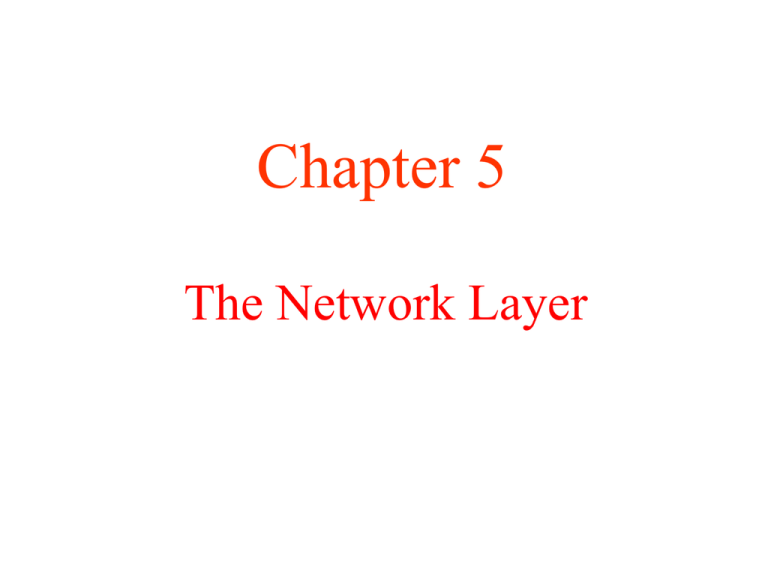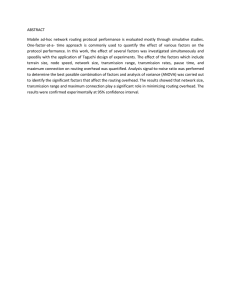Chapter 5 The Network Layer
advertisement

Chapter 5 The Network Layer Network Layer Design Isues • • • • • Store-and-Forward Packet Switching Services Provided to the Transport Layer Implementation of Connectionless Service Implementation of Connection-Oriented Service Comparison of Virtual-Circuit and Datagram Subnets Store-and-Forward Packet Switching fig 5-1 The environment of the network layer protocols. Implementation of Connectionless Service Routing within a diagram subnet. Implementation of Connection-Oriented Service Routing within a virtual-circuit subnet. Comparison of Virtual-Circuit and Datagram Subnets 5-4 Routing Algorithms • • • • • • • • • • The Optimality Principle Shortest Path Routing Flooding Distance Vector Routing Link State Routing Hierarchical Routing Broadcast Routing Multicast Routing Routing for Mobile Hosts Routing in Ad Hoc Networks Routing Algorithms (2) Conflict between fairness and optimality. The Optimality Principle (a) A subnet. (b) A sink tree for router B. Shortest Path Routing The first 5 steps used in computing the shortest path from A to D. The arrows indicate the working node. Distance Vector Routing (a) A subnet. (b) Input from A, I, H, K, and the new routing table for J. Distance Vector Routing (2) The count-to-infinity problem. Link State Routing Each router must do the following: 1. Discover its neighbors, learn their network address. 2. Measure the delay or cost to each of its neighbors. 3. Construct a packet telling all it has just learned. 4. Send this packet to all other routers. 5. Compute the shortest path to every other router. Learning about the Neighbors (a) Nine routers and a LAN. (b) A graph model of (a). Measuring Line Cost A subnet in which the East and West parts are connected by two lines. Building Link State Packets (a) A subnet. (b) The link state packets for this subnet. Distributing the Link State Packets The packet buffer for router B in the previous slide (Fig. 5-13). Hierarchical Routing Hierarchical routing. Broadcast Routing Reverse path forwarding. (a) A subnet. (b) a Sink tree. (c) The tree built by reverse path forwarding. Multicast Routing (a) A network. (b) A spanning tree for the leftmost router. (c) A multicast tree for group 1. (d) A multicast tree for group 2.





